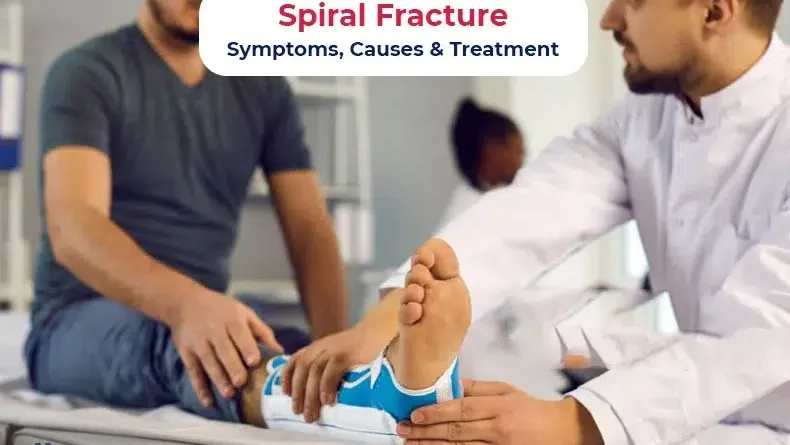Spiral Fracture Recovery Time and Proven Tips to Heal Faster
Recovering from a spiral fracture can be a challenging process. Whether you’ve suffered this type of injury from a sports activity, a fall, or an accident, understanding the recovery timeline and steps involved is essential. This guide, brought to you by Er Of Dallas, provides everything you need to know about spiral fracture recovery time, rehabilitation strategies, and tips to regain strength and mobility.
What Is a Spiral Fracture?
A spiral fracture occurs when a bone twists, causing it to break in a helical pattern. This type of fracture is common in long bones like the femur, tibia, or humerus. It often results from high-energy trauma or rotational forces, such as twisting the leg during a fall or in contact sports.
Symptoms of a Spiral Fracture
- Intense pain at the site of the injury
- Swelling and bruising
- Deformity of the affected limb
- Difficulty moving the limb or bearing weight
- Hearing a snap or crack at the time of injury
The Spiral Fracture Recovery Timeline
1. Initial Diagnosis and Treatment
After sustaining a spiral fracture, the first step is proper diagnosis. An X-ray or CT scan is used to confirm the fracture’s type and severity. Treatment typically involves:
- Immobilization with a cast or brace
- Surgery for severe cases, including the use of metal rods, plates, or screws
2. Acute Healing Phase (0-6 Weeks)
- What happens: During the first 6 weeks, the body forms a soft callus around the fracture site. This is a crucial period where the bone begins to heal.
- Care tips: Rest, elevate the injured limb, and avoid putting weight on the affected area. Follow your doctor’s instructions for medications and wound care if surgery was performed.
3. Intermediate Healing Phase (6-12 Weeks)
- What happens: The soft callus hardens into a stronger, more durable bone structure. During this phase, you might transition from a cast to a walking boot or brace.
- Care tips: Begin light physiotherapy exercises to maintain joint mobility and prevent muscle atrophy.
4. Late Healing Phase (3-6 Months)
- What happens: Bone remodeling occurs, making the bone stronger. Most patients can resume moderate activities during this phase.
- Care tips: Increase the intensity of physiotherapy under supervision, focusing on strength and flexibility.
5. Full Recovery (6-12 Months)
- What happens: Complete bone healing can take up to a year, depending on the severity of the fracture and individual factors like age and overall health.
- Care tips: Gradually return to normal activities. Follow up with your healthcare provider to ensure the bone has healed properly.
Factors Affecting Spiral Fracture Recovery Time
Several factors influence how long it takes to recover from a spiral fracture:
1. Age
Younger individuals typically heal faster due to higher bone regeneration rates.
2. Severity of the Fracture
Complex fractures that require surgery often have longer recovery periods.
3. Overall Health
Conditions like osteoporosis or diabetes can slow the healing process.
4. Treatment Compliance
Following medical advice, attending physiotherapy sessions, and avoiding activities that stress the injured bone are crucial for timely recovery.
5. Nutrition
A diet rich in calcium, vitamin D, and protein supports bone healing. Include foods like dairy products, leafy greens, and lean meats in your diet.
Rehabilitation and Physical Therapy
Physical therapy is a cornerstone of recovery. Here’s what you can expect:
1. Initial Phase
- Gentle range-of-motion exercises to maintain joint flexibility
- Isometric exercises to prevent muscle loss
2. Intermediate Phase
- Strengthening exercises for the surrounding muscles
- Balance and coordination training
3. Advanced Phase
- Weight-bearing exercises under supervision
- Gradual return to sports or high-impact activities
Tips for a Successful Rehabilitation
- Be patient and consistent with your exercises.
- Communicate with your therapist about any discomfort.
- Use assistive devices, like crutches or canes, as needed.
Tips to Speed Up Spiral Fracture Recovery
1. Follow Medical Advice
Stick to the treatment plan prescribed by your healthcare provider.
2. Stay Active (Within Limits)
Avoid complete immobility; engage in light activities approved by your doctor.
3. Maintain a Balanced Diet
Include nutrients essential for bone healing, such as calcium, magnesium, and zinc.
4. Avoid Smoking and Alcohol
These habits can impair blood flow and delay bone healing.
5. Stay Positive
Mental health plays a significant role in recovery. Stay motivated and focus on gradual progress.
FAQs About Spiral Fracture Recovery Time
1. How long does it take for a spiral fracture to heal completely?
Most spiral fractures heal within 6-12 months, depending on the severity and individual factors.
2. Can I walk with a spiral fracture?
Walking is usually restricted in the initial phases. Your doctor will advise you when it’s safe to begin weight-bearing activities.
3. Is surgery always required for a spiral fracture?
Not always. Simple fractures can heal with immobilization, while complex ones may require surgery.
4. What are the risks if a spiral fracture is not treated properly?
Improper treatment can lead to complications such as delayed healing, malunion, or permanent loss of function.
5. How can I manage pain during recovery?
Pain can be managed with prescribed medications, ice packs, and elevation of the injured limb.
For more blogs visit rzblogs.com

